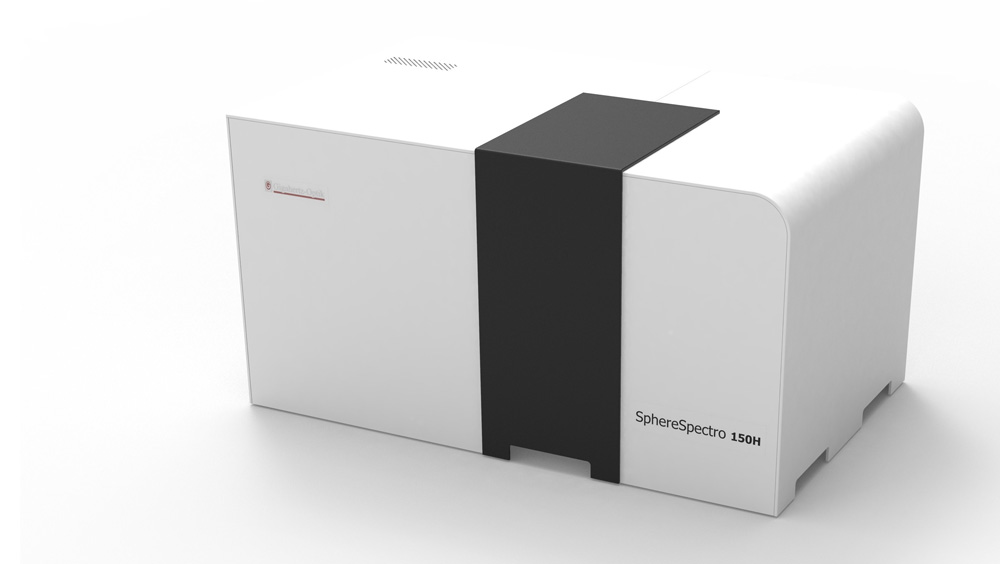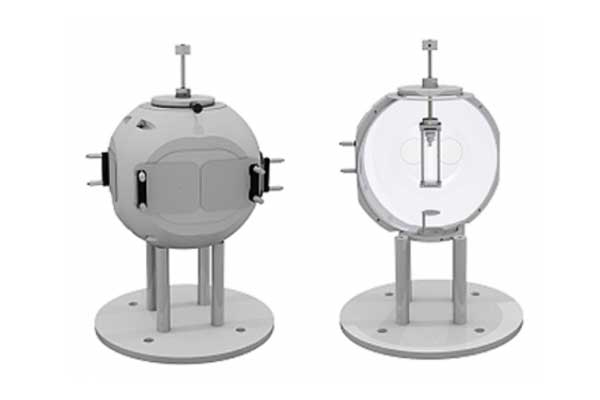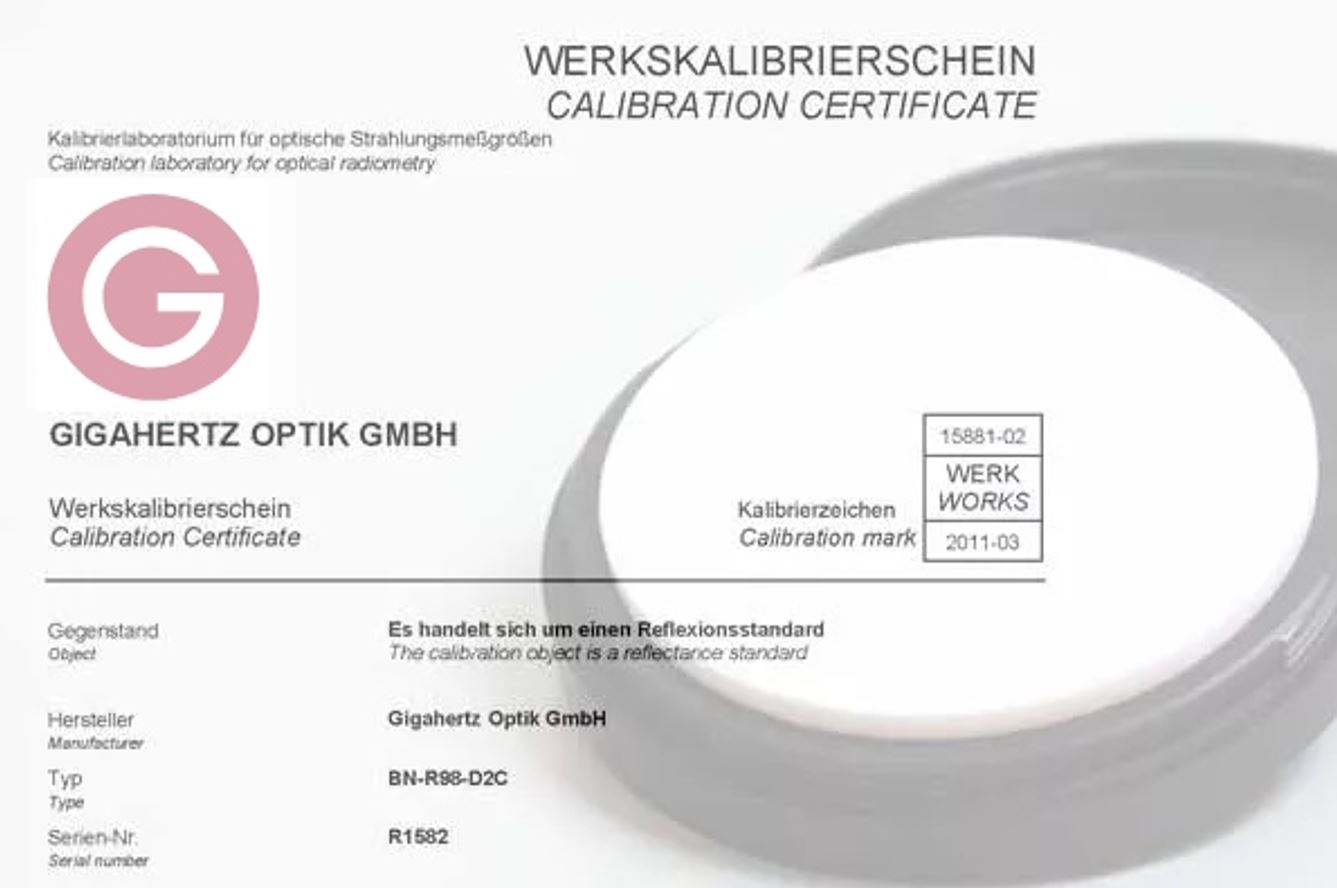Optical Material Properties Determination
Optical material properties and their areas of application
The optical properties of materials include such measures as reflection, transmission, absorption, fluorescence and photoluminescence. Gigahertz Optik GmbH offers measuring instruments like spectrophotometers and accessories, calibration standards and calibration services for measuring or determining optical material properties. Application examples from these product ranges are presented on this page.
UV/VIS/NIR Spectrophotometer for clear, turbid or diffuse Samples
UV/VIS/NIR spectroscopy is an established measurement technique for decades with many applications.
The most common case is the measurement of clear samples:
Mostly absorption, reflection and transmission are measured (DIN 5036-3,CIE-130-1998). Especially the spectral absorption coefficient µa is an important physical quantity for further analysis because it allows statements about the composition of the sample.
Challenge of measuring diffuse, turbid and scattering samples:
The measurement or investigation of scattering/diffus/turbid samples is a greater challenge, since a large number of effects such as scattering in the material, absorption and remission have to be taken into account. Physically, this means that in addition to the spectral absorption coefficient µa, the spectral effective scattering coefficient µs must also be determined. For scattering samples, the effective scattering coefficient µs' (also called reduced scattering coefficient) provides further analysis possibilities.
Universal Integrating Sphere Design Criteria for the Measurement of Optical Material Properties
The optical properties of materials are routinely described in terms of their reflection, transmission and absorption. To measure these key parameters, materials are exposed to optical radiation which is then partially reflected, transmitted or absorbed by the samples. The most common type of equipment for measuring these optical properties is a spectrophotometer. These instruments comprise a light source for sample illumination, a sample holder with measuring geometry for steering the reflected or transmitted radiation and a detector for measuring the radiation. If the light source provides broadband illumination of the sample then a spectrometer, typically array based, will form the detector stage. Alternatively, the sample may be illuminated with monochromatic radiation that is scanned through the wavelength range of interest. In this configuration, single element photodetectors such as photomultiplier tubes and photodiodes are used.
Non-Destructive Light Transmission Measurement of Large Glass Panes
The amount of visible light transmitted by the glass used in buildings, automobiles, airplanes, trains, etc. is of utmost importance to the people occupying and using them. Therefore, the light transmission of window glazing, vehicle windscreens, etc. needs to be evaluated with respect to the photometric sensitivity of the human eye. Conventional measurements with laboratory based spectrophotometers, as with the statutory qualification of car windscreen light transmission in accordance with ECE R43 for example, permit only relatively small pieces of glass to be measured. Large panes of glass and windscreens must first be cut into suitably small samples. Portable spectrophotometers, on the other hand, help to avoid this time-consuming and costly effort and even make it possible to measure the light transmission of windows in-situ.
The big challenge in designing a portable spectrophotometer is the implementation of the required measurement geometry. The classical arrangement of conventional stationary measuring systems, as given in ECE R43 for example, is based on sample illumination by a parallel light beam and an integrating sphere as detector.
High-Performance Light Source for Material Testing or Aging Tests with a Sun-Like Spectrum AM1.5
Material is constantly exposed to a lot of energy by the sun, especially in the high-energy blue and UV, which can lead to significant aging effects. In order to test this, in addition to the high radiation power (intensity), the spectral distribution (similar to the sun) and homogeneous lighting output (area) are important.
Calibration of Spectrophotometers for 8/d Reflection
Integrating spheres are used as the reflection measuring optics within many commercially available spectrophotometers. The 8 / d measuring geometry is the usual choice for scattering materials. Here, the sample is illuminated with a beam at 8 ° incidence angle and the total diffuse reflected radiation is measured. A reflection measurement represents the proportion of incident radiation that is returned by a surface. Therefore, to measure the reflectance, spectrophotometers must first determine the 100% level of the incident radiation. Spectrophotometers offering 8 / d reflection measurement geometry require diffuse reflection calibration standards. Common calibration standards are either made of pressed barium sulfate powder or synthetic materials. The synthetic material is much more robust and can be cleaned in case of contamination by reworking the reflection surface. In addition, these PTFE-based white plastics offer a wide usable spectral range from 250 nm to 2400 nm.




